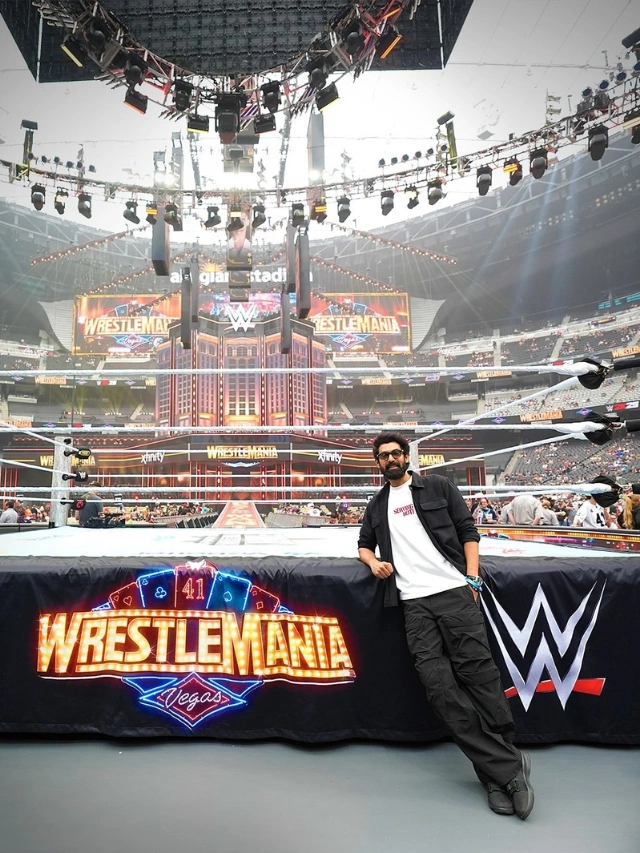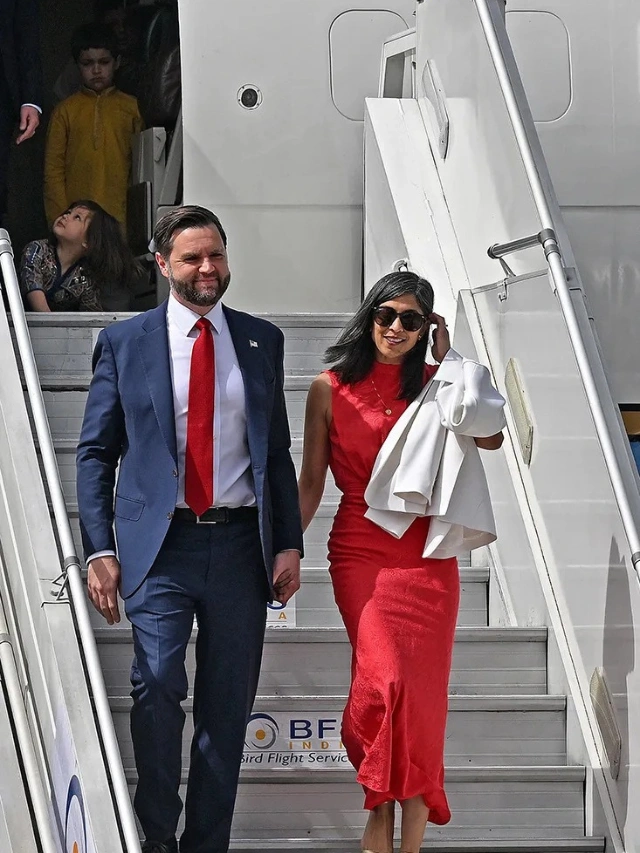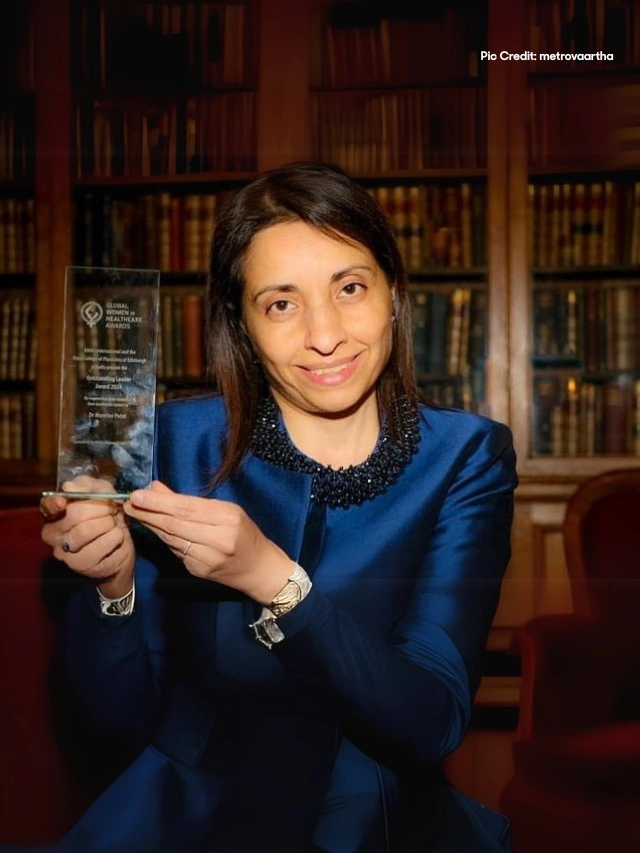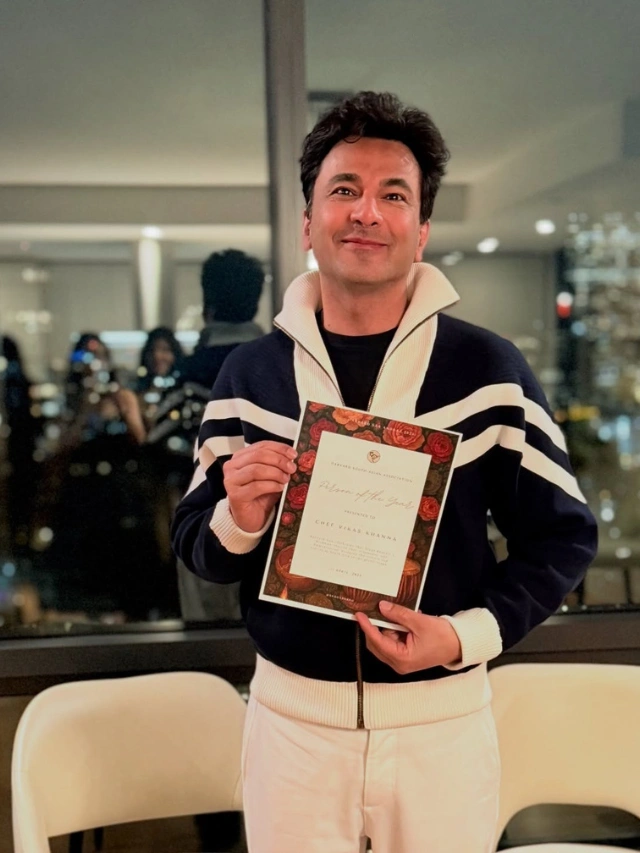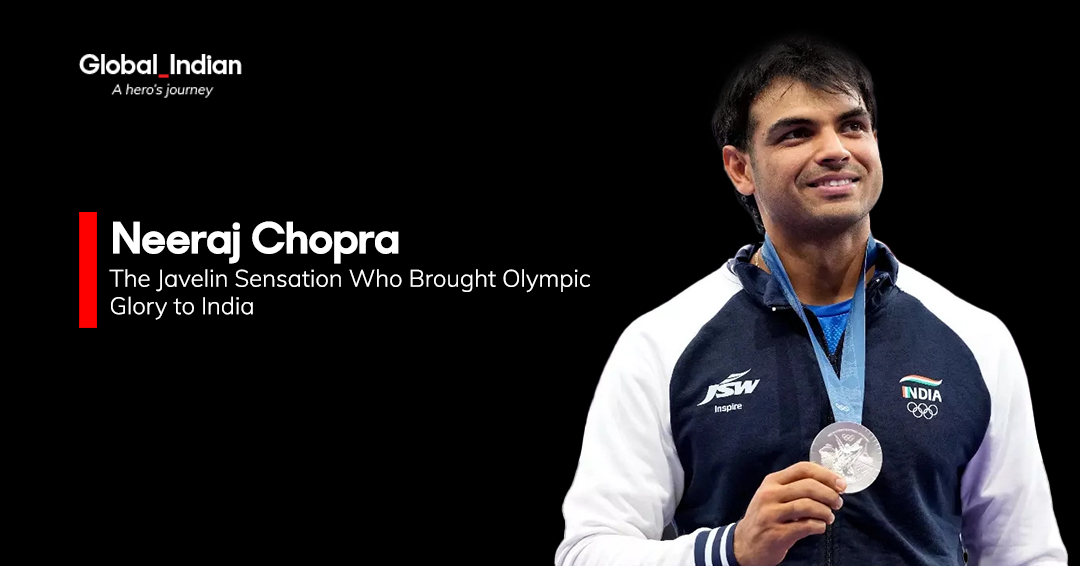
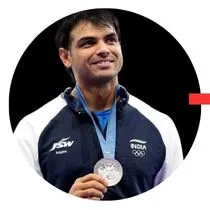
Neeraj Chopra
Neeraj Chopra has emerged as India’s greatest javelin champion. He made history as the first Asian athlete to win an Olympic gold medal in javelin throw at the Tokyo 2020 Games. This momentous victory gave India its first Olympic gold in athletics after a hundred years of waiting.
CEO’s | Actors | Politicians | Sports Stars
A chubby teenager from Khandra village in Haryana turned into an Olympic champion. His incredible story began when he picked up javelin throw to shed some weight. Today, he stands tall with a personal best of 89.94 meters and hasn’t missed the podium in 24 straight competitions since 2020.
Chopra’s trophy cabinet sparkles with gold medals from major tournaments including the Olympics and World Championships. He became India’s youngest individual Olympic gold medalist. His success continued with a silver medal at the 2024 Olympics, making him the first Indian to claim back-to-back Olympic medals in javelin throw. His achievements stretch beyond sports – they show what determination and dreams can achieve against tough odds.
“Your dedication, your hard work, your focus — these are the things that will lead you to success. No matter where you start, if you believe in yourself and keep pushing forward, you can achieve anything.”
The Humble Beginnings of Neeraj Chopra
Life in Khandra village
Born on December 24, 1997, Neeraj Chopra grew up in Khandra, a small farming village in Haryana’s Panipat district. The modest settlement had about 2,000 residents who made their living through farming. The village didn’t have simple sports facilities like a playground, stadium, or gym. Yet this same village would produce India’s first Olympic gold medalist in athletics. Neeraj’s family was a traditional joint household of 19 members. He lived with his parents Satish Kumar (farmer) and Saroj Devi (housewife), two sisters, and three uncles – Surinder, Bhim, and Sultan. Young athletes from the village had to travel nearly 6 kilometers to reach the closest gym. All the same, his rural roots taught him values of hard work and determination that shaped his athletic journey.
The overweight child who found his calling
The pampered eldest grandson of the Chopra family struggled with obesity as a child. Neeraj weighed around 80-90 kilograms at just 12 years old. His grandmother’s love showed in generous servings of malai (cream), makkhan (butter), and doodh (milk), which added substantially to his weight. His position as the eldest child earned him special treatment at home. “He wasn’t allowed to do any household chores. We didn’t send him to work in the fields. He was the first kid in our family and he was like a doll for us,” his uncle Sultan remembered. His weight soon worried his family, especially after other children started bullying him. His uncle Surinder stepped in and took young Neeraj to a local gym to help him get fit.
First encounter with javelin throw
A chance visit to Panipat’s Shivaji Stadium in 2011 changed Neeraj’s life forever. The 13-year-old started spending time at the stadium after his gym sessions. He watched senior athletes practice javelin throw. The sport caught his attention right away. “Hume toh pata bhi nahi chala isne kab bhala fekne start kar diya (We had no clue when he started throwing the javelin),” his uncle Bhim Chopra later said. Jaiveer Choudhary, a former Indian javelin thrower, noticed the teenager’s natural talent during these visits. Choudhary asked him casually, “bhala phekega?” (will you throw the javelin?), and Neeraj nodded yes. Without any training, he threw the javelin over 40 meters in his first attempt. Jaiveer turned to other athletes and said, “ye to natural hai” (he is a natural talent). He took the promising youngster under his wing and started training him in the sport that would make Neeraj a national icon.

Early Training Years: Shaping the Champion
Moving to Panchkula at age 13
The pivotal transition in Neeraj Chopra’s experience came in 2011. The 13-year-old traveled over four hours from his native Khandra village to Tau Devi Lal Sports Complex in Panchkula. He had trained for a year at Shivaji Stadium in Panipat before getting his first chance to practice on a synthetic track. The teenager’s original throws barely reached 55 meters. Coach Naseem Ahmad’s guidance helped improve Neeraj’s training by a lot. His disciplined routine included about 50 throws three days a week. He also competed with seniors twice weekly in practice matches. The young athlete kept track of every throwing milestone in his personal notebook. He wrote down each achievement as he broke through the 60m, 70m, and 80m barriers.
Training without specialized equipment
Beyond conventional practice, Naseem Ahmad created a detailed development strategy for Neeraj. The coach knew that javelin throw just needs exceptional stamina and strength, so he designed a unique athletics program. Neeraj’s daily schedule was packed. He started with javelin sessions in the morning, trained with long-distance runners, and ended up with more javelin practice in the evenings. This mix of different training styles helped build his endurance. He worked on his technique with cross legs and a wide last stride. These elements gave him the momentum he needed for smooth delivery. Each day started with two-stride throws. He then moved up to three-stride, five-stride, and full run-up techniques. This helped him master his signature landing form. The hostel stay let Ahmad keep a close eye on his promising athlete. Neeraj rarely needed any supervision though – he spent his free time studying javelin techniques or asking seniors to show him Olympic javelin footage.
First national victories
The dedicated training paid off quickly. Neeraj achieved his first big breakthrough in October 2012. He set a new national record with a 68.40-meter throw and won gold at the National Junior Athletics Championships in Lucknow. His first international medal came two years later – a silver at the Youth Olympic Games qualification competition in Bangkok in 2014. That same year, he crossed the 70-meter mark with a throw of 70.19m. He made another huge leap in 2015. The All India Inter-University Athletics Meet saw him break the 80-meter barrier with an 81.04m throw. This set a world junior record. Neeraj Chopra stood out among all his peers during these early years. He kept getting better and threw 82.23 meters at the South Asian Games in Guwahati in 2016. This proved he was India’s most promising javelin talent.
Breaking onto the International Stage
World U20 Championship: The record-breaking throw
July 2016 became a turning point in Neeraj Chopra’s career as he competed at the IAAF World U20 Championships in Bydgzcz, Poland. His second throw reached an incredible 86.48 meters and broke the previous world junior record by almost two meters. This remarkable feat made him the first Indian to win gold at the World U20 Championships. He also became the first Indian athlete to set a world record in athletics and held both the national senior record and world junior record. The Rajputana Rifles celebrated Naib Subedar Chopra’s outstanding achievement with a special event soon after his victory. This groundbreaking performance caught the world’s attention and proved Neeraj’s place among the greatest javelin throwers.
Joining the Indian Army
The Indian Army spotted Neeraj’s exceptional talent before his world championship success. A team from Rajputana Rifles noticed him in 2015 as an Olympic prospect during his training at Tau Devi Lal sports complex in Panchkula, where he threw javelins beyond 70 meters. The Indian Army inducted him as a direct entry Naib Subedar in 4 Rajputana Rifles on May 15, 2016. He then joined the Mission Olympics Wing and Army Sports Institute in Pune for training. This program helps identify and train promising athletes in 11 sports for national and international competitions. Neeraj trained under Subedar Kashinath Naik’s guidance, a 2010 Commonwealth Games bronze medalist in javelin throw. His steady progress earned him a promotion from Naib Subedar to Subedar, the prestigious Arjuna Award in 2018, and the Vishisht Seva Medal.
Overcoming early career injuries
Injuries almost stopped Neeraj’s promising career several times. He faced a back injury during the Federation Cup in New Delhi in April 2016, which came from his intense schedule and poor diet and rest. A bigger challenge came in 2019 when bone spurs in his right elbow forced him to miss the World Championships in Doha. He had surgery at Mumbai’s Kokilaben Dhirubai Ambani Hospital on May 3, 2019. After six months of recovery, he went to South Africa to train with German biomechanics expert Klaus Bartonietz. Neeraj shared his inspiring viewpoint during these tough times: “When we get injured, we feel that everything is over. I felt it when I got injured in 2019 ahead of the Worlds, but I came back… After injury, the athlete is forced to answer the question – to continue or not. It all depends on how you answer the question. I decided to keep going”.
The Road to Tokyo Olympics
Training during the pandemic
The unprecedented pandemic severely disrupted Neeraj Chopra’s training schedule. He was training in Turkey after his elbow surgery when COVID-19 started spreading across the globe in early 2020. The Sports Authority of India ordered him to self-isolate for 14 days after his return. “I am not training at all. The gates of this hostel have been locked. Not allowed to go anywhere but we are given an old gym to do some workout to keep ourselves fit,” Neeraj shared during this time. Lockdown restrictions forced him to spend the rest of 2020 training at the National Institute of Sports in Patiala. A positive development came when the Athletics Federation of India asked the Odisha Government to host a special javelin camp at Kalinga Stadium in Bhubaneswar. This significant December 2020-February 2021 training camp went smoothly and gave Neeraj essential preparation time.
Qualification journey
The qualification process started well for Neeraj Chopra. He secured his Tokyo Olympics spot in January 2020 at a competition in Potchefstroom, South Africa. His impressive throw of 87.86m easily exceeded the Olympic entry standard of 85.00m. This direct qualification proved valuable as COVID-19 restrictions later reduced competition opportunities. Neeraj could focus on preparation instead of chasing qualification standards while other athletes worldwide struggled. His training at Kalinga Stadium led to participation in several European competitions. He won gold in Karlstad, Sweden with a throw of 80.96m in June 2021. A bronze medal followed at another event in Finland where he threw 86.79m.
Mental preparation for the biggest stage
Mental freshness became Neeraj Chopra’s advantage. His limited competition schedule worked better than his competitors who participated in many events before Tokyo. “His confidence was due to his fine performances prior to the Olympics and his mental freshness. Not being exhausted by many competitions helped him stay focused,” coach Klaus Bartonietz explained. This strategy helped him stay competitive without burning out. Neeraj managed to keep a disciplined routine throughout his preparation. “No restrictions from my side. Only some self-restrictions of Neeraj like no alcohol, no smoking…meaning following a healthy lifestyle,” Bartonietz added. Of course, Neeraj’s mindset showed this disciplined approach: “The fear of competition gradually goes away once you start participating in international tournaments… you will not get intimidated and you will start learning to focus on just giving your best”. He showed remarkable composure in Tokyo by topping his qualifying group with an 86.65m throw that secured automatic entry to the final.
Olympic Glory and Beyond
The historic gold medal throw
August 7, 2021 marked a defining moment in Indian sports history as Neeraj Chopra stepped onto the Olympic Stadium field in Tokyo. His second throw soared to 87.58 meters and put him straight at the top of the leaderboard. This remarkable feat made him India’s first track and field athlete to win an Olympic gold medal. He also became the second Indian to claim an individual Olympic gold medal after Abhinav Bindra’s win in men’s 10m air rifle shooting at the 2008 Beijing Olympics. That historic night in Tokyo showed Chopra’s supreme confidence when he threw the javelin, turned around, raised both arms and started celebrating before the javelin landed—he knew he had secured his place in history.
Becoming a national icon overnight
Neeraj’s Olympic triumph turned him into a household name across India. His gold medal victory in Tokyo became one of the greatest moments in India’s sports folklore. His success sparked a nationwide athletics revolution. Children felt inspired to join track and field events, and Indian athletes entered global competitions with newfound pride. The Indian President and Prime Minister sent congratulatory messages, and he broke new ground by becoming the first male athlete on Vogue India’s cover. Neeraj’s greatest satisfaction came from his sport’s increased visibility, as he said: “Now everyone in India knows what a javelin is. I’m most happy about that”.
World Championship success
After his Olympic glory, Neeraj’s meteoric rise through world athletics continued. He claimed silver at the 2022 World Athletics Championships with an 88.13-meter throw, becoming India’s second athlete to win a World Championships medal after Anju Bobby George’s bronze in 2003. His defining moment came in August 2023 when he won gold at the World Athletics Championships in Budapest with an 88.17-meter throw. He made history as Asia’s first javelin gold medalist at the World Championships. The Paris 2024 Olympics saw him secure silver with an 89.45m throw, making him India’s first track-and-field athlete to win medals in consecutive Olympics. His excellence has earned him gold in all major tournaments, cementing his legacy as one of Indian sports’ greatest athletes.
Personal Life of Neeraj Chopra
The man behind the medals
Humility defines Neeraj Chopra’s character despite his meteoric rise to fame. He managed to keep the same grounded personality that endeared him to millions after his Olympic triumph. “I’m receiving so much love from people for this medal, which feels really good. People assume I must get annoyed or tired that people are constantly clicking selfies and taking autographs, but it’s not like that. I think if God made me get so much love and respect from people, I should also respect that”. His priorities remain clear despite his celebrity status: “Mera asli kaam meri training hai, mera sports hai. I want to stay the same”.
Beyond athletics, Neeraj pushes himself to grow as a person. “Every time he meets me he jokes around saying ‘Hey Rushdee, see how good my English is now. Yeah? My English improved huh?'”. This commitment to self-improvement goes beyond his sporting career. His coach points out: “No restrictions from my side. Only some self-restrictions of Neeraj like no alcohol, no smoking…meaning following a healthy lifestyle”. His authenticity shows in every interaction, as someone noted: “He is a fantastic human being. And nobody can fake a personality like that”.
Marriage with Himani Mor
Love blossomed unexpectedly for Neeraj Chopra during his time in the United States. The couple took their fans by surprise with their wedding announcement on January 16, 2025. They chose the beautiful SuryaVilas Resort in Kumarhatti, near Solan, for their private ceremony. “Started a new chapter of life with my family. Grateful for every blessing that brought us to this moment together. Bound by love, happily ever after,” Neeraj shared on social media. The wedding pandit had no idea he was performing the ceremony for an Olympic gold medalist.
Himani’s background fits perfectly with Neeraj’s athletic world. She ranked 42nd in India in singles and 27th in doubles as a tennis player. Sports runs deep in her family – her parents played kabaddi while her brothers chose boxing and wrestling. She studies Sports Management and Administration at McCormack Isenberg School of Management in Massachusetts. Neeraj talks about their relationship: “We spoke casually as athletes. Then slowly, we fell in love”. Their marriage represents what Neeraj’s uncle calls “a love plus arranged marriage,” blessed by both families. Neeraj showed his progressive values by refusing dowry and accepting just one rupee as “shagun”.
Key Achievements
Historic Olympic Medals: Neeraj Chopra created history at Tokyo 2020 Olympics when his 87.58m throw earned India’s first Olympic gold medal in athletics. He proved his mettle again at Paris 2024 by securing silver with an 89.45m throw. This remarkable feat made him one of only five Indians who won multiple individual Olympic medals.
World Championship Breakthrough: Chopra’s 88.13m throw brought him silver at the 2022 World Athletics Championships. He became the second Indian medalist at this prestigious event. The following year proved even better when he threw 88.17m to win gold. This historic victory made him the first Asian athlete to secure a javelin throw gold at the World Championships.
Asian Games Dominance: The 5-year old legacy of Chopra’s Asian Games success started with an 88.06m gold-winning throw in Jakarta (2018). He followed this up with a season-best 88.88m throw in Hangzhou (2023). His growing influence in Indian sports earned him the honor of being India’s flag-bearer at the 2018 Games.
Continental Brilliance: Chopra’s golden throw of 86.47m lit up the 2018 Commonwealth Games in Gold Coast. This success came after his triumphant 85.23m throw at the 2017 Asian Athletics Championships.
Diamond League Excellence: The year 2022 saw Chopra become the first Indian to win a Diamond League meet in Lausanne. His success story reached new heights when he threw 88.44m to win the Diamond League trophy that year. No Indian athlete had achieved this prestigious feat before.
Record-Setting Junior Career: The 2016 World U20 Championship showcased Chopra’s early promise. His remarkable 86.48m throw not only won gold but also set an unbroken world junior record. This groundbreaking performance made him India’s first gold medalist at a World U20 Championship.
National Recognition: Chopra’s exceptional sporting journey earned him prestigious awards. These include the Arjuna Award (2018), Major Dhyan Chand Khel Ratna Award (2021), and Padma Shri (2022). The Army Sports Institute in Pune honored him by naming their stadium “Neeraj Chopra Stadium”.
Unmatched Consistency: Chopra has managed to keep an incredible streak alive since 2020. He finished on the podium in 24 consecutive competitions. This remarkable run shows his dominance in international javelin competition.
Impact on the Industry
Revolutionizing Indian Athletics: Neeraj Chopra’s Olympic gold has altered the map of Indian sports, particularly track and field. His Tokyo triumph drew nearly 100 boys and girls to the stadium where he started his career. Stores across the country began selling replica javelins made of bamboo. The Athletics Federation of India marked August 7—the day of his Olympic victory—as National Javelin Day. World Athletics president Sebastian Coe highlighted Chopra’s role, stating that he “has a powerful influence in helping us grow our sport internationally”.
Commercial Breakthrough: Chopra’s market value has surged to an estimated INR 2236.08 million according to Kroll analysts. His Olympic success led to deals with ten major brands including Tata AIA Life Insurance, Gillette India, and Under Armor. His social media presence grew rapidly, with a 200 percent increase in followers within a week of his Tokyo victory. He now commands over 7.5 million Instagram followers, matching the popularity of cricket stars and Bollywood actors in India.
Inspiring Athletic Excellence: Chopra’s achievements have created unprecedented enthusiasm for athletics nationwide. India celebrated a national record of 107 medals at the 2023 Asian Games. The 2023 World Championships javelin competition saw two other Indians place fifth and sixth alongside Chopra’s gold. Five other Indian javelin throwers crossed the 80-meter mark within two years of his Olympic triumph.
Infrastructure Changes: Odisha built India’s first indoor track stadium after Chopra’s Olympic success. The Athletics Federation of India plans to increase top-level coaches from 1,100 to 5,000 and develop 200 high-performance centers. These improved facilities aim to expand India’s elite athletes in track and field from 150 to more than 10,000.
Global Recognition: Indian athletics achieved several breakthroughs in the three years following Chopra’s Olympic victory. The country won its first Thomas Cup in men’s badminton. Indian athletes set an Asian record in the 4x400m relay at World Championships. Antim Panghal became the youngest Indian world championship medalist at age 19. Chopra’s consistent performances at elite competitions have created a new blueprint for Indian athletics. His success proves that Indian athletes can deliver world-class performances consistently.
Giving Back
Philanthropy Through Sports: Neeraj Chopra joined the prestigious Laureus Sport for Good initiative as an Ambassador. This global sports-based charity works to improve young people’s lives. The organization supports over 300 programs worldwide that aim to eradicate inequality and discrimination in society. Neeraj expressed his genuine enthusiasm: “It’s a big honor for me to join Laureus as an Ambassador. To use my platform and the power of sport to help young people in India and around the world is something I am looking forward to doing”.
COVID-19 Relief Efforts: The pandemic ravaged India in March 2020. Neeraj showed his dedication to social responsibility by donating Rs 3 lakh to relief funds. He gave Rs 2 lakh to the PM CARES fund and Rs 1 lakh to the Haryana COVID Relief Fund. He spent this time self-isolating at the National Institute of Sports in Patiala after returning from his training trip to Turkey.
The Neeraj Chopra Foundation: Neeraj’s foundation goes beyond one-time donations with its complete mission to promote health, wellness, and sports development throughout India. The foundation’s key initiatives include community education about active lifestyles, health screening camps, school programs for holistic development, children’s healthcare support through health-tech advancements, and grassroots sports programs.
Inspiring Future Champions: Neeraj’s most significant effect shines through his inspiration of countless young athletes. Coaches reported being “flooded with requests” from youngsters eager to learn javelin throwing after his Olympic triumph. A young athlete captured this spirit perfectly: “I was determined to do well, so that I could say thank you to Neeraj bhaiya. He is an inspiration for me”. Javelin’s popularity has seen a tremendous boost in India since then.
Advocating for Infrastructure: Neeraj strongly pushes for better sports facilities in India. He hopes his Olympic medal will help develop “if not a ground in every village, at least one close to them, shared by other villages”. His achievements and influence remain remarkably modest throughout his journey.
Key Takeaways
Self-belief is your greatest asset: Neeraj Chopra showed that confidence in one’s abilities leads to success. His self-assurance became evident when he celebrated his Olympic javelin throw before it landed. He knew it was the golden throw. His story teaches us that believing in yourself, even when others doubt you, builds the foundation for extraordinary achievements. This steadfast dedication pushed him from a small village in Haryana to the top of global sports.
Consistency trumps occasional brilliance: Neeraj has managed to keep his podium finish streak in 24 consecutive competitions since 2020. This remarkable consistency shows that sustained excellence defines a champion more than sporadic brilliance. His training approach reflects this philosophy. He focuses on steady improvement and high standards throughout his career.
Life’s unexpected chances can change everything: Neeraj’s experience started when his family enrolled him at a gym 20 kilometers from home to lose weight. He didn’t see this as an inconvenience. Instead, he grabbed the chance to find javelin throwing at the nearby Shivaji Stadium. His openness to this new sport changed his life’s direction completely.
Mental fortitude matches physical preparation: Neeraj credits mental calmness as the key to his success under pressure. “Many athletes have said that when you play with a relaxed mind and body, you produce incredible performances”. His approach proves that technical skill isn’t enough. Staying composed during vital moments often determines the outcome.
Humility preserves success: Neeraj’s grounded nature has won millions of hearts alongside his athletic prowess. Despite his massive fame, he values fans who ask for autographs and selfies. He says, “If God made me get so much love and respect from people, I should also respect that” [Document content missing citation number]. His story reminds us that true champions stay humble whatever their achievements.
Stay focused on the process, not past glory: Neeraj treats each competition like his first. “I always remind myself not to think about the fact that I am an Olympic champion… If I dwell on my past gold medal win and feel the need to repeat it, I’ll unnecessarily put extra pressure on myself”. This mindset helps him perform consistently at the highest level without pressure from expectations.
Global Indian Impact Analysis

FAQs
Who is Neeraj Chopra’s spouse?
As of now, Neeraj Chopra is not married, and there has been no public information about his relationship status or any spouse. Neeraj tends to keep his personal life private and focused more on his athletic career. Though a public figure, he has not openly discussed his romantic life or future marriage plans in interviews. Fans and the media have shown interest in his personal life, but the athlete remains focused on his sport and representing India on the global stage in javelin throw competitions.
What is Neeraj Chopra’s net worth?
Neeraj Chopra’s net worth is estimated to be around $5 million as of 2024. His income comes from a combination of his athletic earnings, endorsements, and sponsorships. After winning gold in the Tokyo 2020 Olympics, his market value increased significantly, making him one of the most sought-after athletes in India. He has signed deals with various brands, including Nike, BYJU’S, and more. In addition to these endorsements, Chopra also receives income from prize money earned through competitions and support from government programs for athletes.
What awards has Neeraj Chopra won?
Neeraj Chopra has received numerous prestigious awards for his outstanding achievements in sports. He was honored with the Rajiv Gandhi Khel Ratna Award, India’s highest sporting honor, in 2021, following his Olympic success. In addition, he received the Arjuna Award in 2018, recognizing his contribution to athletics. Beyond these national honors, Neeraj has been celebrated with various state-level awards and recognition. His Olympic gold medal in the javelin throw at Tokyo 2020 elevated his profile, making him one of India’s most decorated track and field athletes.
What is Neeraj Chopra’s family background?
Neeraj Chopra was born into a farming family in Khandra village, Panipat district, Haryana. His father, Satish Kumar, is a farmer, and his mother, Saroj Devi, is a homemaker. He has two sisters, and his family has been a constant support in his athletic journey. Neeraj’s humble beginnings, rooted in rural India, have shaped his values and work ethic. Despite his international fame, he remains closely connected to his family and often credits them for their unwavering support in helping him pursue a career in sports.
What is Neeraj Chopra’s nationality?
Neeraj Chopra is an Indian athlete, representing India in the sport of javelin throw. Born on December 24, 1997, in the state of Haryana, he has been one of India’s premier athletes on the global stage. Neeraj has proudly flown the Indian flag at various international competitions, with his most notable achievement being the gold medal at the Tokyo 2020 Olympics. His victory in the javelin throw made him a national icon, and he continues to compete internationally while being a symbol of pride for Indian sports.
How many medals has Neeraj Chopra won?
Neeraj Chopra has won several medals throughout his athletic career. His most significant achievement is winning the gold medal in javelin throw at the Tokyo 2020 Olympics, making him the first Indian athlete to win a gold medal in track and field events at the Olympics. Besides his Olympic success, Neeraj has also won gold at the 2018 Asian Games and the 2018 Commonwealth Games. He has collected medals at various international meets, including the Diamond League and World Championships, establishing himself as one of the world’s top javelin throwers.
Who is Neeraj Chopra’s coach?
Neeraj Chopra’s current coach is Dr. Klaus Bartonietz, a biomechanics expert from Germany. Bartonietz has been instrumental in Neeraj’s development, particularly after 2019, helping him refine his technique and overcome injuries. Under his guidance, Neeraj achieved his historic gold medal at the Tokyo 2020 Olympics. Before Bartonietz, Neeraj was coached by Uwe Hohn, a legendary German javelin thrower. Chopra’s success is often attributed to the effective coaching partnerships he has had over the years, and Bartonietz’s experience has been key in helping Neeraj maintain top performance levels.

